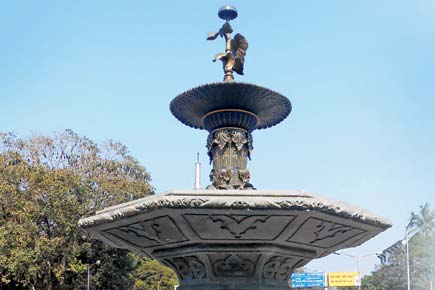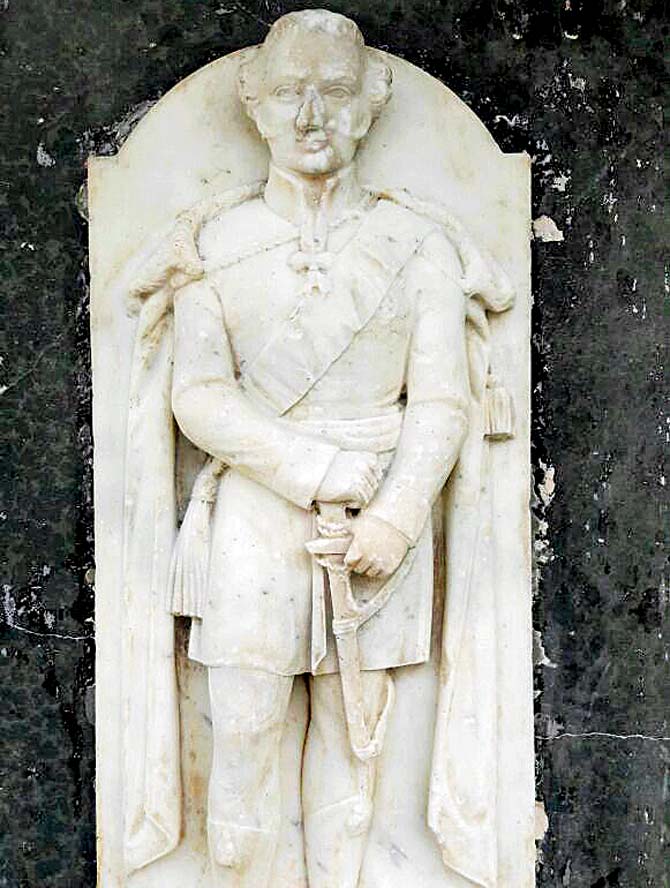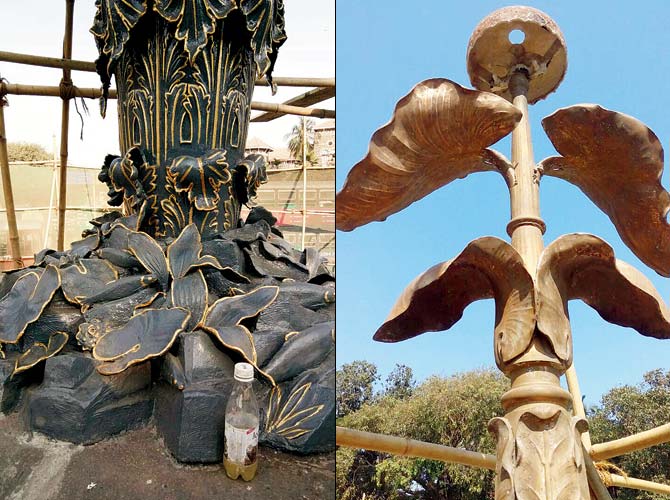Built in memory of Duke Wellington, who conferred this title on himself for having been loyal to the King, Colaba's 152-year-old Wellington Fountain is restored to its former glory


The restored fountain
“I will be testing the waters shortly,” says conservation architect Vikas Dilawari. He isn’t using an idiom. He means it.
ADVERTISEMENT
By next week, the water supply to Colaba’s Wellington Fountain will once again be restored to see how the landmark’s plumbing is doing after a round of restoration, before it is finally unveiled at the end of this month.

A line drawing of the structure. PICS/LINE DRAWING: Vikas Dilawari
Built in 1865 in memory of the Duke of Wellington, a loyal servant of the British Crown who visited Bombay in 1801 and 1804, the fountain was one of the first impressions of the city the visitor arriving via Gateway of India had. Hailed for being one of the first men to write on the philosophy of the Indian famine, the Duke was honoured with this monument. “Built in the Neo-Classical style at a cost of Rs 12,000 by public subscription, the fountain’s site was chosen by Henry Conybeare, where the Duke had occupied tents of residence (Esplanade) during his visits. Designed by Lt Colonel JJ Scott, its construction was overseen by General Augustus Fuller,” shares Dilawari whose team worked for four months on site.

The nose of the Duke of Wellington on one of the eight bas-relief marble panels was restored earlier, and discovered during cleaning
The combined efforts of the MCGM and private institutions (Mahindra & Mahindra Ltd) buoyed the project in the right direction. “For over three years, we have been involved in the maintenance of the fountain. We felt it needed to be restored to its past glory. After several discussions between senior management and Dilawari, it was suggested that multiple paint layers be removed from the structure,” says Haresh Bhoir, Manager (Projects, M&M), adding that the restoration cost Rs 10 lakh.

The details are in metal; the cast iron leaves were used as ornate features
Chandrashekar Chore, Deputy Municipal Commissioner (DMC, Improvement) played a key role. “When I was promoted from Ward A Assistant Commissioner to DMC, I was given the task of maintaining all heritage structures under BMC’s jurisdiction, with guidance from the Municipal Commissioner.”
Engineering heritage
“For any fountain, aesthetics, location, water engineering and maintenance are vital. In case of Wellington, water engineering was in good shape since it was a functional fountain,” says Dilawari. He explains that the water flows perfectly from one tray to another and then into the lowest trough without soiling the shaft or the eight bas-relief marble panels on it. These are also protected in the monsoon due to the design of the first level cantilever tray,” he adds.
Dilawari’s team worked with INTACH’s Mumbai Chapter and Jeernodhar Conservators Pvt Ltd to give the project at 360-degree thrust. “The biggest challenge was to get to the original surface under multiple layers of paint, and then choose the most apt technique to clean it. We had to be careful that over-cleaning didn’t spoil the basalt stone,” he shares.
Fountain of urban life
Dilawari traces the origin of fountains in the city as philanthropic efforts to improve Mumbai’s ability to serve the needy with clean drinking water. “Fountains were built across the world at the time (1850s), and Bombay wasn’t far behind.”
Drinking water fountains came to replace wells until the mid 19th century. Fountains lived a short life, of a few decades, because many were located at busy traffic roundabouts and by then, households had begun receiving municipality water connections. A lack of maintenance over the decades resulted in them becoming obsolete.”
Of late, the MCGM has revived the restoration process via the PPP (Public-Private Partnership) model. The aesthetically-designed railings around Wellington Fountain installed by the BMC are one such example. “We wanted it (railing) to gel with the fountain’s design,” adds Chore, a heritage buff who admits that such projects are a welcome change from clearing files at his desk. “We will install an informative plaque near the structure, and are exploring a suggestion by Dilawari to build a small gate to allow visitors a better view,” he ads.
Additional information courtesy: Exploring The Water Heritage of Mumbai by Varsha Shirgaonkar
BASALT IS BEST: Since basalt stone was used, the extent of damage caused by several layers of paint was less than it would have been on the porous Porbander or Kurla stone
TRAFFIC STOPPER: According to history books, in 1888 and 1909, it was proposed that the fountain be moved to CST and GPO due to the jams it was causing, but later stopped
 Subscribe today by clicking the link and stay updated with the latest news!" Click here!
Subscribe today by clicking the link and stay updated with the latest news!" Click here!







